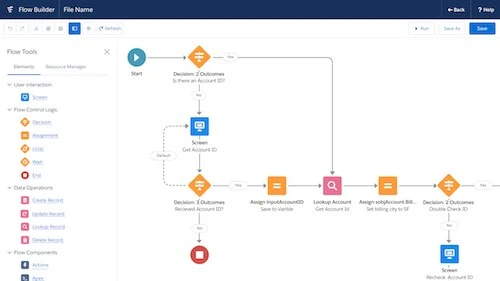I understand the challenges associated with low user adoption of Salesforce and the impact it can have on business growth. In this article, we will delve into the reasons behind low user adoption and present actionable strategies to overcome them. Our comprehensive approach will empower your team to fully embrace Salesforce, ensuring optimal utilization of this powerful platform.
The Importance of User Adoption
User adoption is a critical factor in achieving success with any software platform, including Salesforce. When users are reluctant to embrace new technology or fail to leverage its full potential, the organization as a whole suffers. Low user adoption can lead to inefficient processes, missed opportunities, and a significant waste of resources. By addressing the root causes and implementing effective strategies, we can drive user adoption to new heights.
Understanding the Reasons for Low User Adoption
To tackle the issue of low user adoption, it is vital to identify the underlying reasons. Several factors commonly contribute to this problem:
1. Lack of Training and Education
Insufficient training and education are often the primary culprits behind low user adoption rates. Users may struggle to understand the platform’s features and functionalities, leading to frustration and resistance. Providing comprehensive training programs and ongoing support is crucial for fostering user confidence and competence.

2. Poor User Experience (UX)
A subpar user experience can significantly hamper user adoption. If the Salesforce interface is complex, cluttered, or difficult to navigate, users may find it overwhelming or time-consuming to perform their tasks. Enhancing the user interface (UI) and streamlining workflows can greatly improve the overall user experience, encouraging widespread adoption.
3. Lack of Management Support and Engagement
When management fails to demonstrate enthusiasm and support for Salesforce, it sends a discouraging message to the rest of the team. Without strong leadership and clear communication regarding the benefits and expectations of Salesforce, users may question its value and resist adoption. Management should actively participate in training sessions, emphasize the importance of Salesforce, and lead by example.
4. Inadequate Communication and Change Management
Effective communication is key to successful change management. If users are not adequately informed about the reasons for implementing Salesforce, the benefits it offers, and the expected outcomes, they may view it as an unnecessary disruption. Engaging in transparent and ongoing communication, addressing concerns, and highlighting success stories can alleviate resistance and foster a culture of adoption.
5. Lack of Customization and Tailoring to User Needs
Salesforce is a highly customizable platform, allowing organizations to tailor it to their specific requirements. Failing to leverage this flexibility and adapting Salesforce to align with user needs can lead to low adoption rates. By investing time and effort into customizing Salesforce to fit the unique workflows and preferences of your team, you can significantly increase user satisfaction and adoption.
Strategies for Maximizing User Adoption
Now that we have explored the reasons behind low user adoption, let’s delve into actionable strategies to overcome this challenge and ensure Salesforce becomes an integral part of your organization’s success.
1. Comprehensive Training and Ongoing Education
Invest in comprehensive training programs that cover the various aspects of Salesforce relevant to different user roles. Provide hands-on training, interactive workshops, and access to online resources such as tutorials and documentation. Additionally, establish a system of continuous education to keep users up to date with new features and best practices.
2. Enhance User Experience (UX) and User Interface (UI)
Simplify the Salesforce interface by removing unnecessary clutter and optimizing the navigation flow. Conduct user research to understand pain points and preferences, and incorporate user feedback into UI improvements. Streamline workflows by automating repetitive tasks and integrating Salesforce with other tools and systems to provide a seamless user experience.
graph LR
A[Streamlined User Experience] --> B[Simplified Interface]
A --> C[Automated Workflows]
A --> D[Integration with Other Tools]3. Foster Management Support and Engagement
Engage management at all levels to actively participate in the adoption process. Encourage managers to lead by example, utilize Salesforce themselves, and communicate its benefits to their teams. Provide regular progress reports to management, demonstrating the positive impact of Salesforce on productivity, efficiency, and revenue.
4. Implement Effective Change Management Strategies
Develop a comprehensive change management plan that includes open and transparent communication channels. Address concerns, provide training materials, and create a feedback loop to ensure users feel heard and supported throughout the adoption process. Celebrate successes and share user stories to inspire others and build momentum.
5. Customize Salesforce to Align with User Needs
Work closely with your team to understand their unique requirements and configure Salesforce accordingly. Leverage the platform’s customization capabilities to create tailored workflows, fields, and reports that align with user preferences. Regularly seek feedback to identify areas for improvement and make iterative adjustments to enhance user satisfaction.
Conclusion
Achieving high user adoption of Salesforce is crucial for unlocking the platform’s full potential and driving business growth. By addressing the common reasons behind low user adoption and implementing our proven strategies, you can position your organization for success. Invest in comprehensive training, enhance the user experience, foster management support, implement effective change management, and customize Salesforce to align with user needs. With these actions, you will empower your team to fully embrace Salesforce and elevate your organization to new heights of productivity and profitability.




